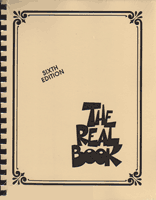Butcher Brown is a jazz-funk band known for their eclectic style and improvisational flair. Their song “Sticky July” showcases their talents, with an especially impressive guitar part and solo. In this tutorial, I’ll break down the chords and scales used in the guitar part and offer tips for improvising over this funky tune.
Chords
The chord progression follows a simple AB pattern, with the A section consisting of:
- F#m7 – Classic minor 7 chord shape with a hammer on from A to B on the B string
- Bm7 – Minor 7 chord, playing the root on the B string twice
- A7/Bb – Interesting voicing with the A7 on top and Bb bass note
- Esus2/G# – Played with thumb, sus2 chord without the A string
- Gmaj7(9/13) – Basically a G major 7 with added 9th and 13th
- Db7 – Hendrix-style chord barring B and E strings
- Dmaj7 – Standard open position D major 7
The B section uses:
- Bmaj7 – Same shape as the Gmaj7 chord
- Em11 – Minor 11 voicing
- Abm9 – Unique voicing like a Gb/Ab
- G/A – Simple sus chord
- Dmaj9 – Classic jazz Dmaj9 sound
- C#sus – Barre or B/C# voicing
- C7b5 – Dominant 7 flat 5 resolving to F#m
Scales for Improvisation
The A section is straightforward, just using the F# minor pentatonic scale. For the B section, target the chord tones of each changing chord while avoiding dissonant tones. Useful scales include:
- Bmaj7 – B major, avoid the #11
- Em11 – E minor or D major
- Abm9 – Ab dorian (Db major scale)
- G/A – G major
- Dmaj9 – D major
- C#sus – C# or F# minor pentatonic
- C7 – C mixolydian
Soloing Over the Changes
When soloing over “Sticky July,” aim to smoothly connect the chord tones through each section. Outline the F# minor tonality over the first part, and switch scales measure-by-measure in the second section. Pay close attention to the chords and avoid dissonant tones.


